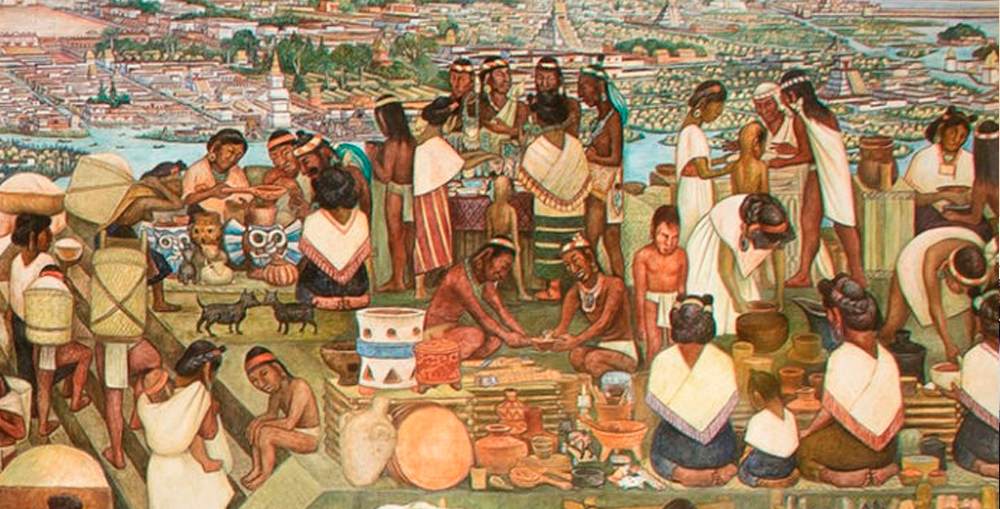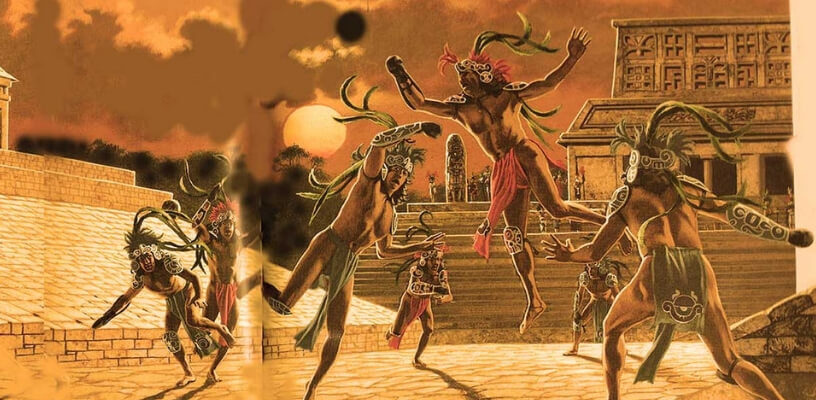The Zapotecs were the largest native people in the federal state of Oaxaca, having existed since the pre-Hispanic period. In this article, we will address how the Social Organization of the Zapotecs, this is representative due to its link with religion, economy, politics and social.

Social Organization of the Zapotecs
The word "Zapotec" comes from Nahuatl, the original dialect of the Aztecs that has survived to this day thanks to the small groups of natives who still speak it. In Nahuatl, the word is "tzapotecatl" which describes the fruit known in Mexico as sapote, which gives these aborigines their name.
Long before the discovery of America, this native people managed to create an advanced nation. In fact, the remains of Monte Albán, Mitla and Yagul reveal the presence of a Zapotec society ahead of its time; long before the arrival of the Spanish.
However, starting in the XNUMXth century, Europeans besieged the Zapotec regions to extract the natural wealth of the area; despite this, this native people was not as afflicted as others (example: the Mayans and Aztecs), in which the Spanish incursion had a strongly military character.
Below are some characteristics of the social organization of this native people, with reference to pre-Hispanic and contemporary elements:
Social organization
Among the social interactions that were applied in this indigenous town, for the achievement of common objectives for their own well-being and that of the community, we have:
Marriage
The Zapotecs carry out inbreeding, which indicates that the members of a family clan can marry another member of their own family environment; It must be emphasized that it is not prohibited to establish a family with individuals from other families.
They distinguish two types of marriages: cohabitation, which follows the common law of the Zapotecs, and the marriage of the Catholic Church. The Church forbids divorce, but sometimes couples simply separate and join freely with other people.
Patriarchy
Zapotec communities are organized according to the patriarchal system, which means that the center of the community is man; very few are the tribes that are organized in a matriarchal way.
Family
The Zapotecs prefer large families (formed by parents, children, grandparents, uncles and cousins), than nuclear families. In the case that a family is nuclear (composed only of parents and children), they usually live in close proximity to the rest of the family.
Inheritance
The Zapotec rule is that, in the event of the death of the parents, the inheritance is divided equally among all the children; but, it often happens that the youngest son benefits more than other children, since he was still living with his parents when they died.
In addition to this, male offspring generally inherit more property than female offspring, due to the fact that it is a patriarchal society. For its part, land can be inherited even before the parents die: when one of the children marries and the parents are so old that they cannot work the land.
social division
When we visualize the composition of the Zapotec social organization, it is shown with a simple and basic distribution, but deeply classist, since it was only divided into two clans that clearly granted superiority to one of the layers.
The first is composed of "priests, merchants and continues with the military." This first group, which constituted the ruling class, which in turn had a pyramidal structure; that is, the upper part was occupied by priests, followed immediately by the nobles, who worked in the commercial area and closes this dominant social layer, the military class.
The subjugated class or the second group of the social organization of the Zapotecs would contain the "villagers, porters, hunters and artisans", who were also classified as the previous group, but this time based on the trades and arts that each one realized, received a hierarchy.
Knowing the Zapotecs in their social organization, it is revealed that this ancestral city in its origins has always been founded with theocratic structural ideas, thus giving a preponderance in society to the religious or priestly class. But this same original system had to be changed in the end, given its weakness not against its own community, but against third parties.
The social organization of the Zapotecs, in its classes, was considerably weak, its members in general were individuals with an evident serene character, since their elementary activities of sustenance were carried out in a sphere of work typical of agricultural and farming groups. hunting, carried out by peasants and hunters. They were complemented by another group even weaker due to their artistic tendencies, who were nothing more than goldsmiths and weavers.
The localities neighboring the Zapotecs would perceive this fragility and then harass them through dominating groups. The main clan, faced with the imminent need to protect everything they had, including their families and their very lives; they were forced to make the decision to add a military stratum, where assistance in any war conflict would be mandatory for all men.
Religion
The Zapotecs of the pre-Hispanic moment conceptualized that the cosmos was besieged by four elements, each one of a specific color tone and with certain supernatural properties. In addition, they hung the gods with natural elements, such as the sun, the rain, the tides, among others; likewise, during this period time was considered cyclical and not linear.
Today, the Zapotecs partly follow the Catholic creed, which was syncretized with pre-Hispanic claims. Current Zapotec dogmas include:
- The veneration of Jesus Christ (child and adult).
- Belief in guardian animals (called tones). At birth, each person acquires a tone, which can be any creature; it is believed that this creature gives the individual some of its natural characteristics (strength, speed, agility, intelligence, among others).
- The existence of warlocks, witches and demons in male and female forms.
In addition to Catholic priests, Zapotec societies have certain priests responsible for leading spiritual rituals; These priests are called "sorcerers" and are responsible for the main ceremonies, such as: weddings, funerals, baptisms, moving to a new home, spiritual cleansing, among others.
Ceremonies
The Zapotecs of the pre-Hispanic period performed a series of rites intended to please the gods. These cults contained gifts of blood and oblations of both humans and animals. Often, the imprisoned warriors of other peoples were given in exchange for the assistance of the gods to obtain good harvests to end the time of drought, among other things.
Today's Zapotec cults are more focused on events that constitute a key part of the cycle of life, such as baptism, communions, marriages, and funerals. Two of the most significant ceremonies are the one that takes place on All Saints' Day and the one that takes place on the day of the patron saint of each locality.
If you found this article interesting Social Organization of the Zapotecs, we invite you to enjoy these others:


